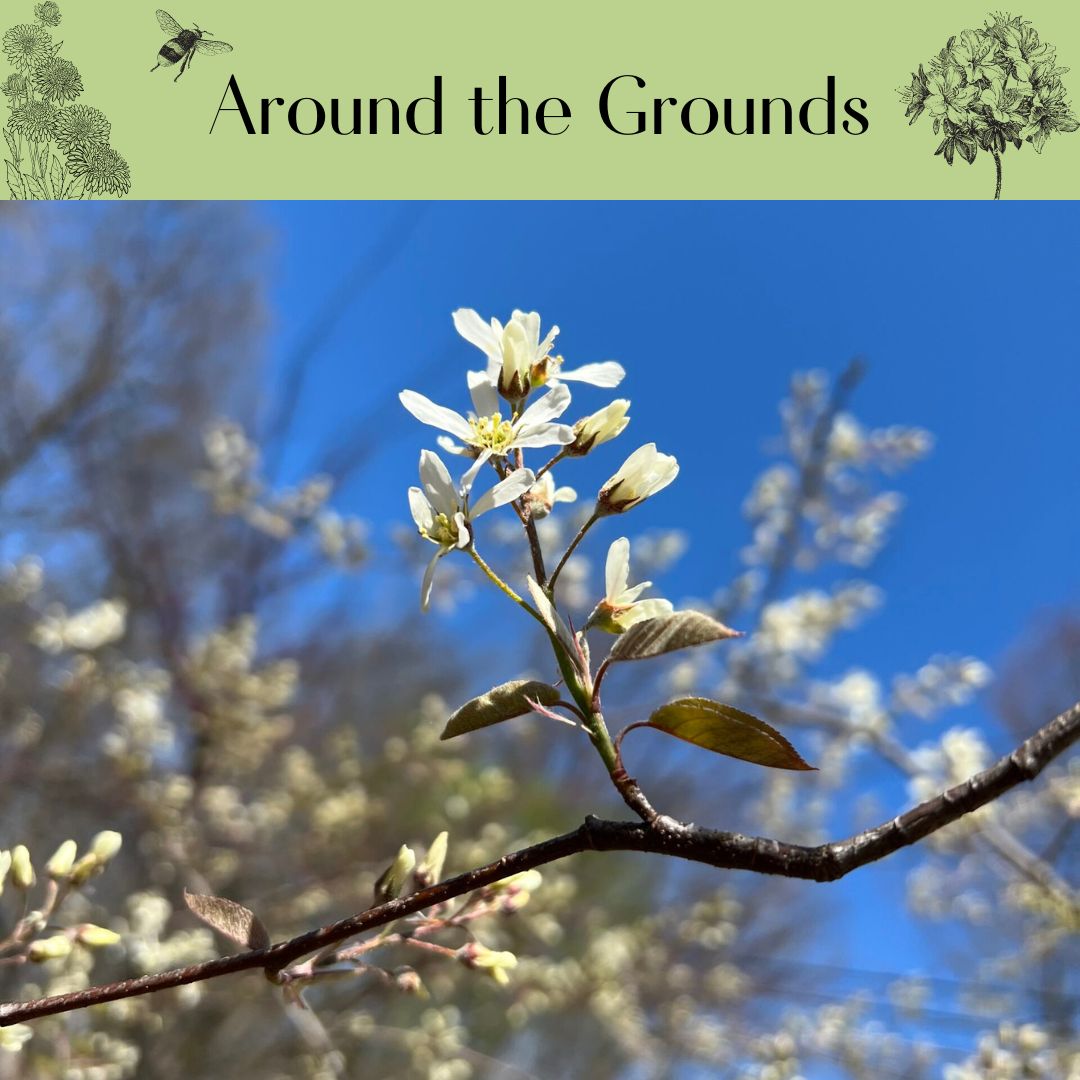Main photo credit: Travis Brady
Amelanchier invites everyone into the garden, sets an elegant table, and makes sure no one leaves hungry. It is the consummate host plant.
Amelanchier (pronounced “amuh-lank-kee-yer”) is a small tree or multi-trunked shrub that will feed bees, butterflies, birds, woodland animals, and humans, all while looking beautiful. You may know it by one of its many common names: serviceberry, shadbush, shadblow, juneberry, wild plum, sugarplum, or saskatoon. While there is debate about the origin of some of these names, everyone agrees that it was called “shadbush” by settlers in New England because its early bloom time coincided with the spawning season of shad fish in northeastern rivers.
Amelanchier blooms in April, covering itself with delicate white flowers, and providing essential nectar and pollen for the first emerging bees. The elegant white blossoms are a welcome sight contrasting beautifully with evergreens. While the flowers remain, bees, butterflies, hummingbirds, and moths all come to visit.
Leaves appear as the flowers fade, but Amelanchier never creates heavy shade. The leaves are narrow and open, so there is plenty of light for underplanting. A true host plant, Amelanchier feeds an estimated 124 species of caterpillar, including the Viceroy, the Striped Hairstreak, and the Red Spotted Purple. That hospitality makes Amelanchier a very appropriate addition to our Pollinator Garden.
Photo: Travis Brady
Our gracious host really sets a fine table in June when the berries appear. That’s when the common names “Juneberry” and “Sugarplum” make sense. Amelanchier berries are not only edible, they are delicious! About the size of blueberries, but delicately sweet like raspberries, Amelanchier berries can be eaten right off the branch or turned into a very fine pie – but only if you can get enough of them before the birds do. It seems that robins, blue jays, cardinals, and mockingbirds all are willing to eat the berries a day or two before we think they are ripe. And we have seen chipmunks and squirrels risking life and limb to climb way out on swaying branches to get their fair share. Most years, we humans only get a handful or two of berries.
Botanically, Amelanchier is complicated. The genus includes over 20 species with native ranges from Canada and Alaska across the entire northern US, with some species even in Arizona and Florida. The best garden varieties in the northern US are Amelanchier arborea and Amelanchier laevis, both found in the taller tree form, and Amelanchier canadensis, which is more typically the multi-trunked shrub form. All three are hardy in zones 4 – 9 and prefer conditions typical of woodland edges, light shade and moist, fairly rich soil. These and other Amelanchier species freely interbreed both in the wild and in nursery conditions, so natural hybrids are common and very difficult to tell apart. If you’re shopping, you can choose a single trunk or multi-trunked specimen, and take whatever the label says with a grain of salt. But you really can’t go wrong.
After all, a gracious host like Amelanchier never turns a guest away from the garden….

